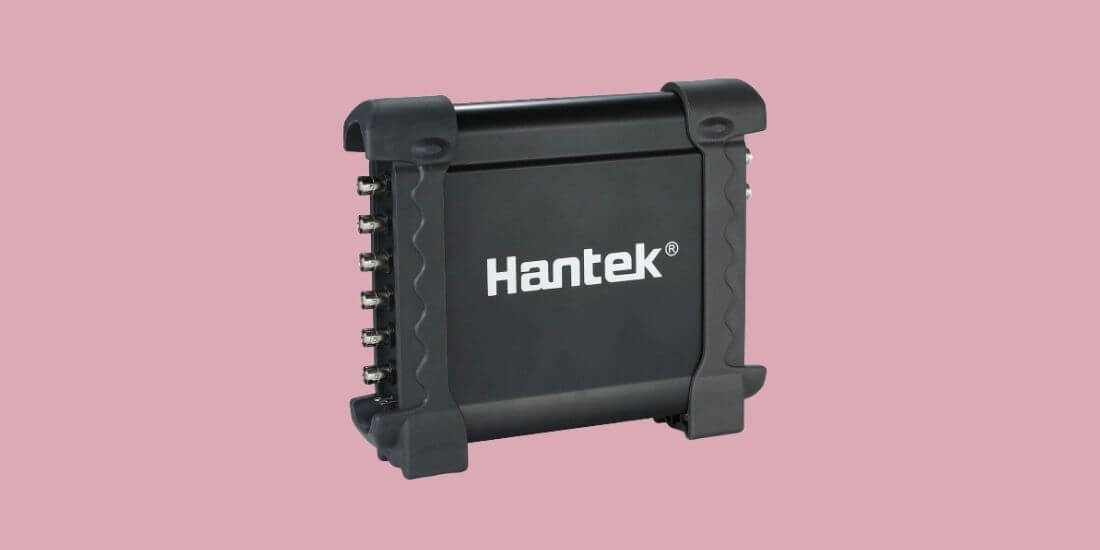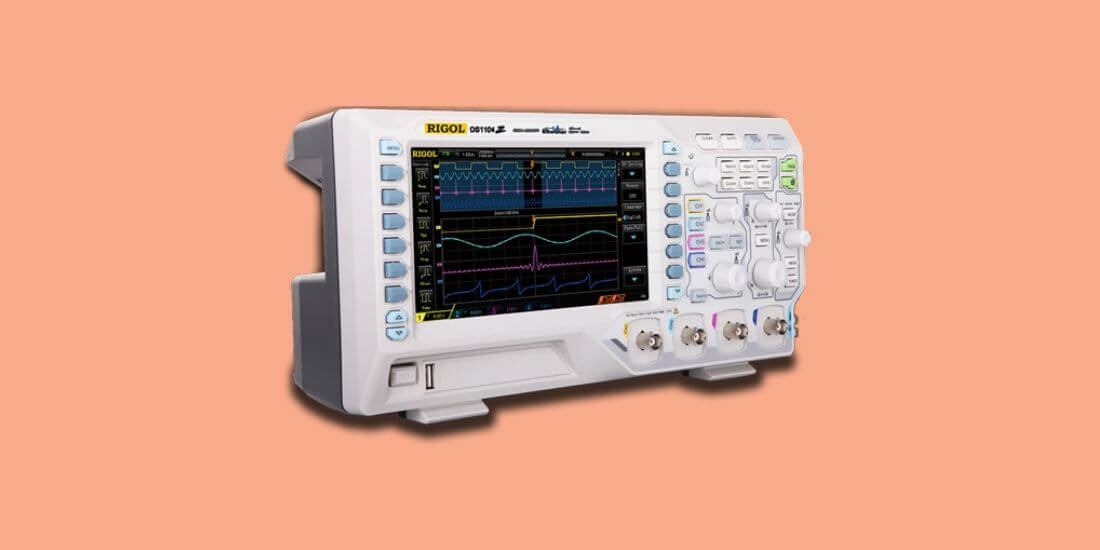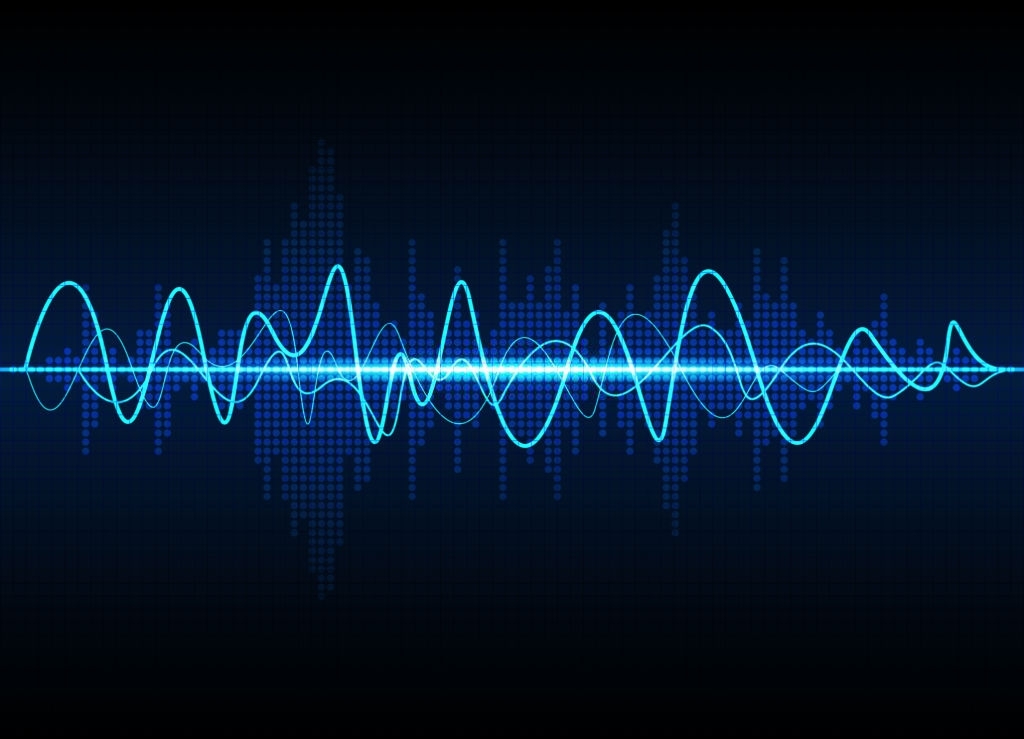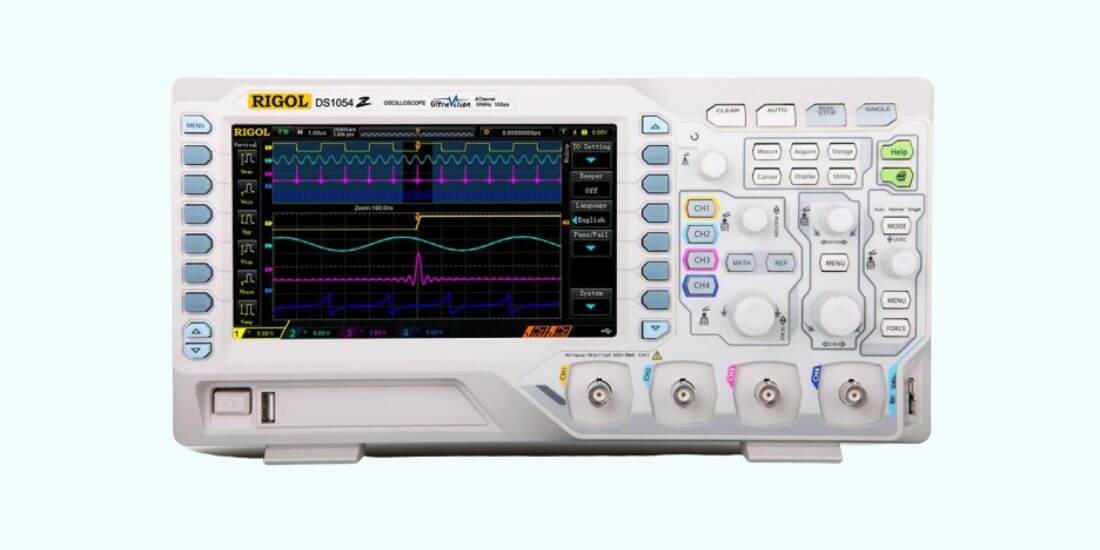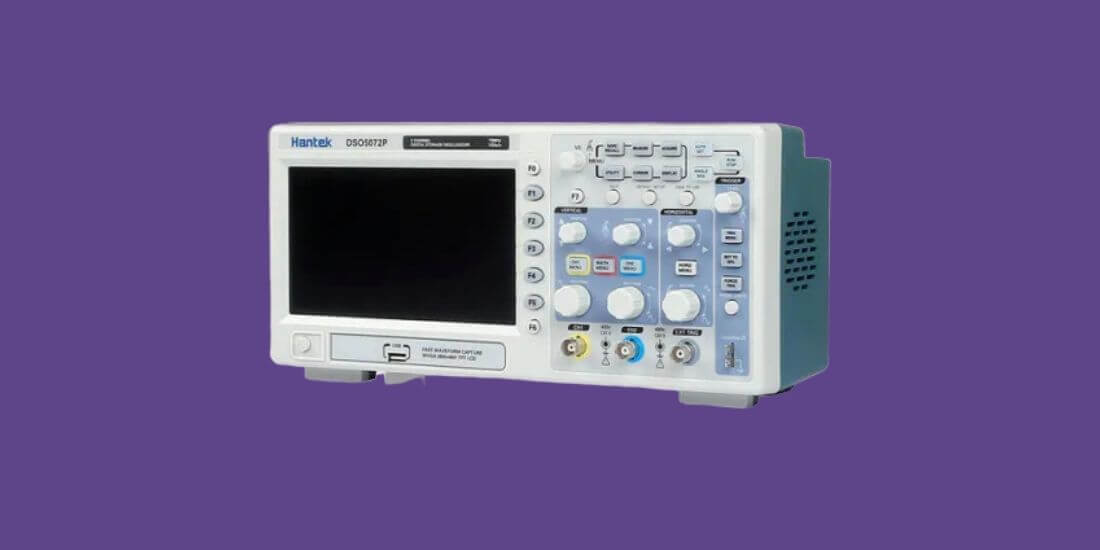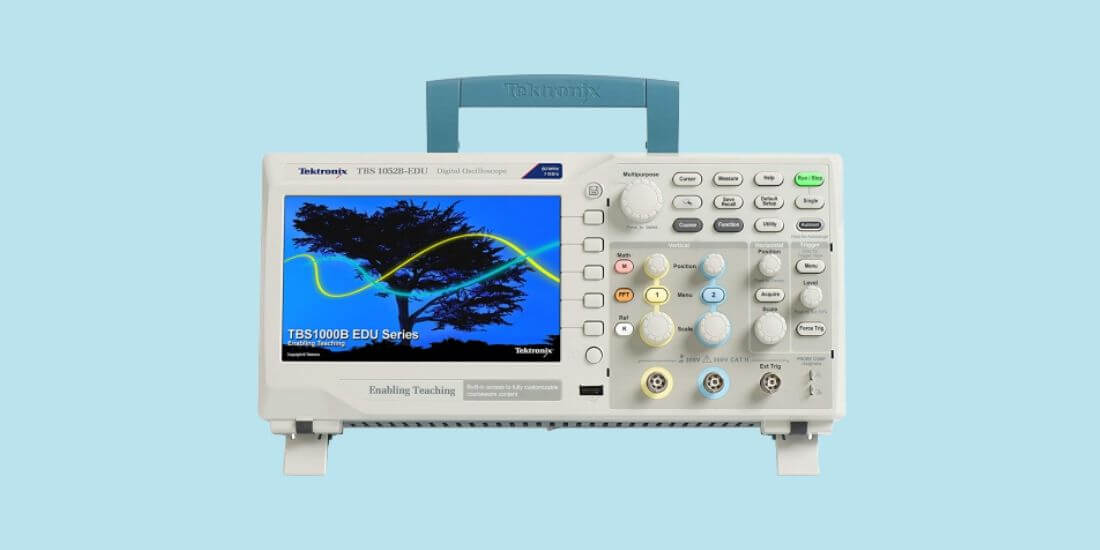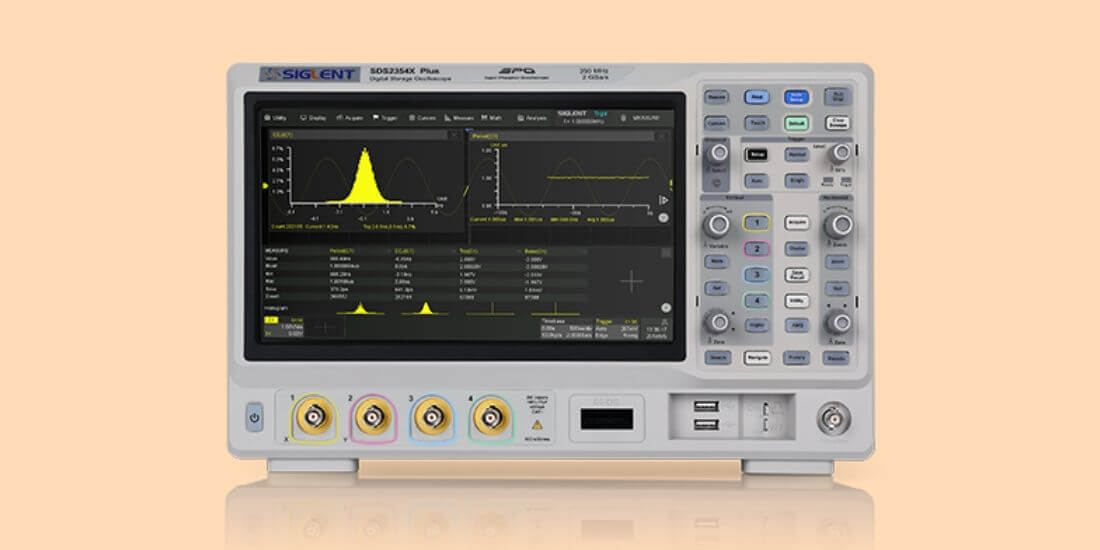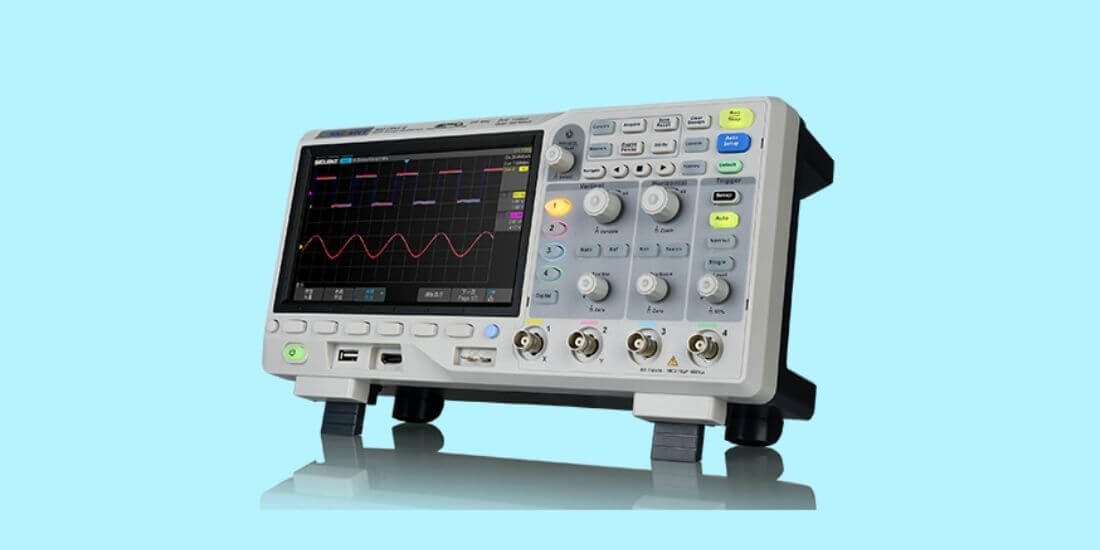Gathering data, viewing it real-time, and analyzing to understand more about whatever it is that you are working on has never been easier.
Today, we have come far from those heavy, bulky oscilloscopes that were hard to carry around, if not impossible, to something that we call USB oscilloscopes.
And, since you’re here looking for a best USB oscilloscope, you probably know all about what it is and how it works.
Even if you don’t, we’re going to break down the features of different models that we think would be good for anyone.
Speaking of them, let’s find out what are the best PC Based Oscilloscopes you can get right now, shall we?
Best USB Oscilloscope Comparison
Last update on 2025-05-28 / Affiliate links / Images from Amazon Product Advertising API
Top 5 Best USB Oscilloscope( PC Based) Review
Some of you may be completely new to the entire idea of USB oscilloscopes, while some of you may already be using one of your own and are just looking for a better replacement or even an upgrade.
Whatever it is, we have gathered the ones we found reliable.
1. Hantek HT6022BE20Mhz 6022be – Best USB Oscilloscope for Money
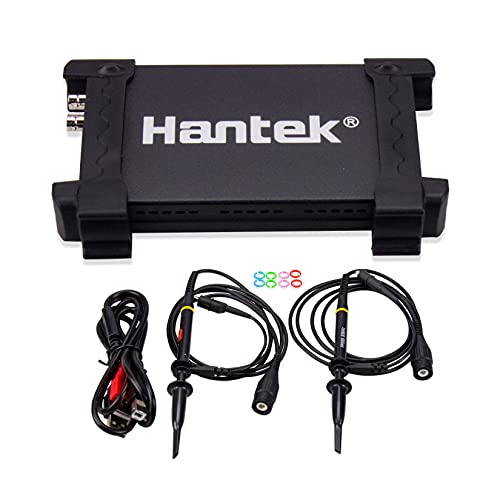
Key Specifications:
- Brand Name: Hantek
- Item Weight: 12.8 ounces
- Bandwidth: 20 MHz
- Sampling Ratre: 48 MSa/s
- Type of trigger: Rising edge, falling edge
- Waveform Display: port/line, waveform average, persistence, intensity
USB oscilloscopes have allowed us to diagnose data at a much lower price and use it almost everywhere with the freedom of carrying it around with us.
- Data transfer in real time: At an extremely cost-effective price, this hantek USB oscilloscope allows you to view data in real-time with the help of a USB 2.0 connection.
- A portable device: Being one of the best pc based oscilloscope, it has a small size (200 (L) x100 (W) x35 (H)) and weighs only 1.54 pounds, making it easy to carry around.
- Power source: You no longer need a power source, as the device is completely powered by the USB connection making it much more portable.
- Data output is fast and accurate: Moreover, having a real-time sampling rate of 48MSa/s and two channels of 20MhzShot bandwidth, it makes transferring and viewing data a lot more accurate and faster.
- A variety of data output types: You can view a great range of data, while also keeping track of even the smallest details as the device comes with an accuracy of ±3% and a time base ranging from 1 nanosecond to 9000 seconds.
Unfortunately, the software that it comes with is poorly written and limits most of what this device can do as well as limiting the device to Windows 7.
However, having more than enough support software from the community, you can just download the latest software available, and uncover all that this device has to offer.
Lastly, coming packaged along with two probes, it allows you to start working as soon as you take it out of the box.
Highlighted Features:
- The rate of sampling is 48MSa/s on two channels at a bandwidth of 20MHz
- This device features a USB 2.0 port and a standard USBXITM interface
- This device works with Windows 2000, NT, XP, Vista, 7/8, and 10
PROS
- Comes packaged with two probes
- Cost-Effective
- Small size and portable
- High sampling rate
CONS
- Poorly written software
2. SainSmart DSO212 Pocket Size Portable Handheld Mini Digital Storage – Best Handheld USB Oscilloscope

Key Specifications:
- Brand Name: SainSmart
- Color: Black
- Bandwidth: 1 MHz
- Sampling Ratre: 10 MSa/s
- Mode of trigger: Ascending and Descending edges
- Storage: 8 MB flash disk memory
- Size and type of screen: 2.8″ TFT LCD
Coming with a display of its own, this oscilloscope from SainSmart gives a new definition to being portable for USB oscilloscopes.
Although it is not completely a PC based oscilloscope, it can still be connected to a PC for transferring and further analyzing the data, thanks to the micro USB port on the device.
- High-resolution display on a portable device: The TFT LCD color display on it has a resolution of 320 x 240 while being 2.8″ on either side. This makes it small enough to fit in your pocket but big enough to see clearly.
- Durable and lightweight: And although it’s covered with an aluminum alloy finish making it more durable, it weighs only 90g, providing you with perhaps one of the most portable oscilloscopes ever.
- Facilities to store data: Packing more than one would expect in a device so small, SainSmart has even provided a built-in 8MB flash storage – saving and transferring data on the screen just got easier.
- User-friendly interface: And, to make it as easy to use, it operates with simple taps and swipes just like any smartphone with additional tap and wheel buttons.
- Process data quickly and accurately: On top of all of that, the device has a sampling rate of 10 MSa/s along with an analog bandwidth of 1 MHz, making the recording and analyzing of data accurate and easier.
This is all possible at the ease of something you can hold in the palm of your hand.
At a really low cost, this device also comes packed with a 2-channel functionality and an open-source application layer that you may customize to your own needs.
Highlighted Features:
- Built-in signal generator with vertical and horizontal precision measuring modes and triggering threshold.
- Saving and transferring waveform data and images easier than ever.
- TFT display presents any measured AC current, including sine, square, sawtooth, and triangle waveforms.
- DS212 is widely applicable in the academic experiment, electronics maintenance, electronic engineering tasks, etc.
PROS
- Extremely Portable
- Not dependent on a PC
- Built-in saving feature
- Good color contrast screen
- Open-source application available for customization
CONS
- Requires a battery to operate
3. Analog Discovery 2: 100MS/s USB Oscilloscope – Best Analog USB Oscilloscope

Key Specifications:
- Brand Name: Digilent
- Color: green, gray
- Product Dimensions: 7 x 6 x 2 inches; 8.48 Ounces
- Item Weight: 8.5 ounces
If you wanted a USB oscilloscope with an incredible software design besides that intricate hardware design, then the Analog Discovery 2 from the company Diligent is just the perfect device for you.
- Features a lot of channels: From 2 Analog inputs to 16 different channel logic analyzers, this device packs in a lot more into something that weighs only 5.6 ounces. And, despite having 16-channel logic analyzers and pattern generators, the device still packs in a stereo audio amplifier to drive external headphones or speakers with AWG signals.
- Excellent frequency analyzing range: Moreover, consisting of a 2-channel Arbitrary Waveform generator as well as a 2-channel Network analyzer, the device can analyze frequency data ranging from 1Hz to 10MHz.
- An excellent device of its type: However, the device being a bit more expensive than the others in this review it may not be what most people would get as their starting USB oscilloscope. But, for those who are looking for an upgrade, this might just be perfect for you.
- User-friendly features: Having great software, with features being actively added to it, you can make the most of this device – putting to test the 2-channel data logger, Spectrum analyzer, and the impedance analyzer.
- Power options: Moreover, the software is Mac, Windows, and Linux compatible, and the device is completely powered by the USB connection.
- High sampling rate and bandwidth: Additionally, despite being so portable, the device still packs in two programmable power supplies to link multiple instruments and maintains a high sampling rate of 100MS/s, along with bandwidth beyond 30MHz.
Highlighted Features:
- External headphones or speakers can be driven by a stereo amplifier with replicated AWG signals
- The digital logic analyzer has 16 channels
- It is easy to build custom applications and automate test and measurement using WaveForms’ Software Development Kit and built-in script editors.
- Analog Discovery 2 can also be used with third-party software, such as LabVIEW and MATLAB.
PROS
- High sampling rate as well as bandwidth
- Software is actively updated
- 16-channel Logic Analyzers
- Extremely lightweight and portable
CONS
- More expensive than other USB oscilloscopes
4. Hantek 1008C PC USB 8CH Automotive Diagnostic – Best Automotive USB Oscilloscope

Key Specifications:
- Brand Name: Hantek
- Color: Black
- Sampling Ratre: 2.4 MSa/s
- Components Included: Hantek 1008C Oscilloscope, Instruction CD, Auto Probe, 4x Alligator clips to coaxial cable, 4 coaxial connectors
- Weight: 12.3 ounces
- Product Dimensions: 190 x 167 x 35 (mm)
In this hantek USB oscilloscope review, we look into a device that is a truly astonishing USB oscilloscope kit.
- Various diagnostic functions: With up to 8 channels for vehicle testing and over 80 types of automotive diagnostic functions, this takes USB oscilloscopes to a completely new level.
- A high level of sensitivity in both axis: With a USB 2.0 interface, this device makes use of a 2.4MSa/s sampling rate. Although lower than the previously discussed sampling rates, this is compensated by a high sensitivity on both the horizontal and vertical axis. More specifically; 1ns/div to 20000s/div(1-2-5sequences) on the horizontal axis and a max input voltage of 400V on the vertical axis.
- Analyzes data over a wide range: As for the Bandwidth, it ranges from 0-250kHz, allowing for a wide range of data to be analyzed.
- A multiple-channel device with a storage option: It weighs about 1.39 pounds, which is understandable considering that it provides not only with eight different channels for data analyzing, but also provides the ability to record waveforms for a long period of time. This is especially useful for people who want to carry out experiments for long, stretched out periods of time.
- Supported operating systems: Although the stock firmware may seem to be incompatible with later versions of Windows, with a few instructions from the online community, you can install it with some effort on Windows 10. And to make it even better, the device, along with its software, allows you to stimulate camshaft and crankshaft signals.
- Provides a wide range of automotive functions: Additionally, with automotive functions such as Ignition, Sensor, Bus detection, Performer, Starter and charging circuits, and many more, there are also videos available online.
These videos will of great help for anyone who has trouble operating the software. Now, this is a great deal for something that sits on the lower end of the price spectrum.
Highlighted Features:
- Oscilloscope with 8 channels, real-time sampling rate of 2.4MSa/s.
- A spectrum analysis function and 12 bits of vertical resolution are included.
- AFM, Crankshaft, Lambda sensor, Distributor, and Throttle position sensors.
- A button located on the panel can be used to call out or close any one of the 20 automatic measurement methods inside, as well as 80 types of standard reference waveforms.
PROS
- The oscilloscope offers 8 channels
- Comes packaged with 8x Alligator clip lines
- Over 80 types of automotive diagnostic functions
- Can record waveform for a long time
CONS
- Software isn’t easy to install on Windows 10
5. SainSmart DSO211 – Best Portable USB Oscilloscope
Key Specifications:
- Brand Name: SainSmart
- Color: Black
- Bandwidth: 200 KHz
- Sampling Ratre: 1 MSa/s
- Trigger Mode: Ascend/Descend Edge Trigger Mode
- Screen Size: 2.8inch
- Item Weight: 2.29 ounces
- Product Dimensions: 106.5mmX55.7mmX11.5mm
Without costing you too much, this device from SainSmart allows you to measure and analyze data without losing too much of the accuracy while also being able to fit perfectly inside your pockets.
- Versatile USB port: The device comes with a micro USB port that you can easily use for file transfer, as well as recharging the 500Mah battery inserted inside. Adding to that, a micro SD card can be inserted into the device to save screenshots and scope traces for later, further diagnosis.
- Possible to work without PC: Not having to worry about carrying your laptop everywhere with you, or taking up too much of your workspace, this device works perfectly without the need of a PC, thanks to the already built-in 2.8-inch full-color LCD display. It’s rich color and vividness allows you to make the most of the data displayed on the screen with a resolution of 320 × 240.
- Axis sensitivity and firmware: However, the device is limited to a sampling rate of 1MSa/s unlike its successor but still retains the sensitivity with 20mv/Div~10V/Div (1-2-5sequence step) on the vertical axis and 1uS/Div~2S/Div (1-2-5sequence step) on the horizontal axis as well as the use of buttons for operation. And while the stock firmware isn’t really useful, BenF firmware, which can be found from the global online community, may be used instead which makes up for it.
- Portable device with data storage facility: Considering it only weighs about 65g and still packs an Analog bandwidth of 200 kHz along with the built-in feature of saving images and waveforms, it is a great deal for its price. And to still keep it truly portable, even without the micro SD card, the oscilloscope comes with a built-in 8MB storage for saving data.
Highlighted Features:
- A pocket-sized oscilloscope with sophisticated features that can fit perfectly into your pocket without sacrificing any of the integral features.
- Suitable for academics, electronic maintenance, electronics engineering, etc.
- You can recharge your oscilloscope’s battery through its mini USB port with a built-in 500mAH lithium battery.
PROS
- Rechargeable battery along with micro USB port
- Ability to save images of waveforms
- Full-color rich LCD display
- Slim and Compact design makes it perfectly portable
CONS
- Stock firmware does not work properly
What to Look for in a USB Oscilloscope?
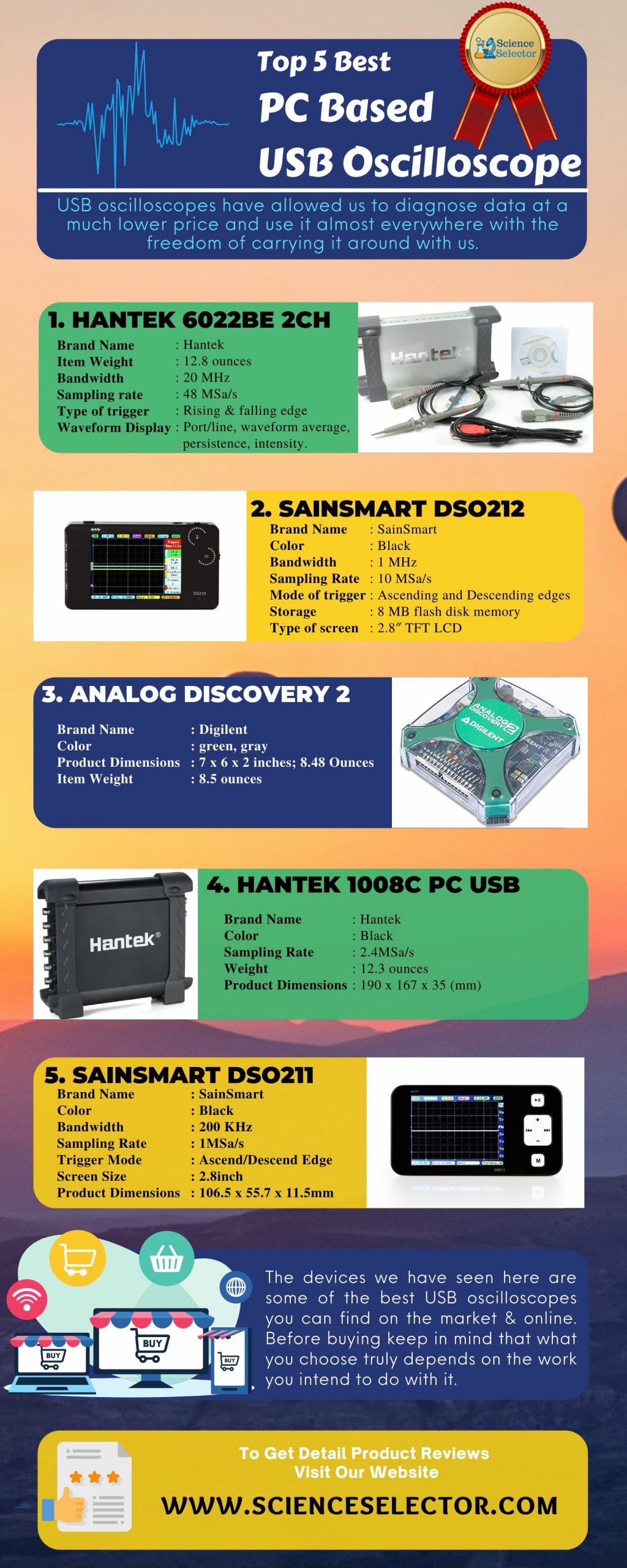
Now for those of you who may be new to the realm of USB oscilloscopes or even the world of oscilloscopes, we have gathered a number of things you need to keep in mind when you’re looking to buy a USB oscilloscope.
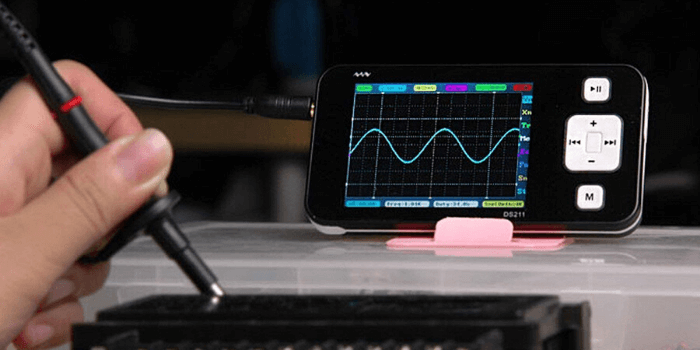
The Sampling Rate
This is the regularity with which an oscilloscope shows the waveform elements. In other words, this is what defines how detailed the information you can see will be, and with how much accuracy the oscilloscope will process information.
Similar to the frame rate of a camera, the higher the sampling rate, the more detailed the data will be, allowing you to capture even the smallest changes in the waveform.
So, when you’re looking for an oscilloscope, make sure to pay attention to the sampling rate, from the minimum sampling rate to the maximum.
While a high sampling rate has its benefits, a minimum sampling rate needs to be known too, in case, you need to analyze signals that change gradually over long periods of time.
And as a side tip, you can use the rule of five, making sure that the sampling rate of the oscilloscope is at least five times that of the peak frequency of whatever you’re working on.
Last update on 2025-05-28 / Affiliate links / Images from Amazon Product Advertising API
Bandwidth
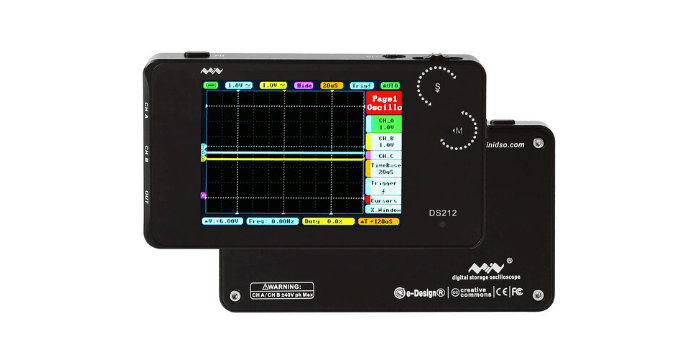
Depending on the type of application for your oscilloscope, you’ll need to keep an eye on the bandwidth range because it determines the capability of the oscilloscope to display the signal accurately.
As the frequency of a signal increases, the capability of the oscilloscope to measure the signal accurately decreases.
And so, the greater the bandwidth range, the higher frequencies you can analyze.
Therefore, similarly to the sampling rate, you may use the rule of five to make sure that the oscilloscope’s bandwidth is large enough to measure at least five times the bandwidth that may be required for measurement.
This could also help you to find out the decisive fifth harmonic and, thus, in determining the shape of the signal.
Memory Capacity
While you’re looking at the features of an oscilloscope you intend to buy, be sure to keep an eye on the memory capacity it has, for even if it has a fast sampling rate, that just means it’ll consume greater memory while recording signals.
Thus, you should make sure the oscilloscope has enough memory capacity for your required signal recording.
The Probes
These are basically the very devices that allow the oscilloscope to take accurate measurements.
And without them, even an oscilloscope with a very high sampling rate as well as a large bandwidth wouldn’t be of any use.
However, that doesn’t mean that just any probe could be used with an oscilloscope.
You need to make sure that all the connected probes are of the same grade and synchronized with both the sampling rate as well as the bandwidth.
This is to give you the best results the oscilloscope could possibly get.
Number of Input Channels
The number of channels that an oscilloscope holds is what determines how much data it can process and what plays such a big part in the pricing.
Keeping in mind your own budget, make sure to see whether the oscilloscope you intend to buy has a sufficient number of channels to allow you executing tasks you require the oscilloscope for.
Software
The software is the very thing without which the data collected would be inaccessible and very well meaningless.
It is what allows us to analyze the data while making countless calculations within a few fractions of a second, and keeping that in mind, we need to make sure that the software is effective and easy-to-use.
What we mean by that is that the software must be able to display data clearly and be compatible with the operating system of your PC while also having ample speed and an easy to use navigation.
Last update on 2025-05-28 / Affiliate links / Images from Amazon Product Advertising API
How Does USB Oscilloscopes Work?
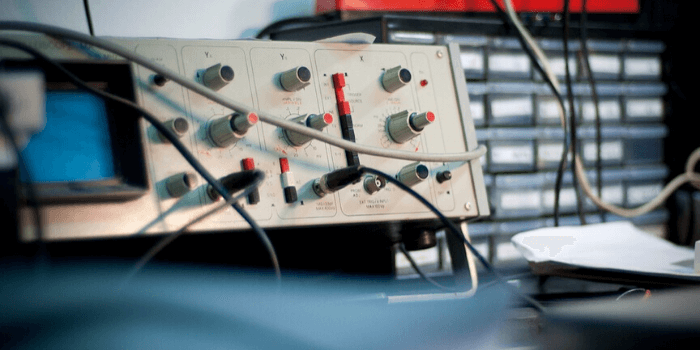
We use USB oscilloscopes for displaying and analyzing numerous forms of signals as waveforms to better understand them.
They allow us to design, troubleshoot, test, repair, or analyze any form of data. But how exactly do they do that?
Collecting Data
USB oscilloscopes take in various forms of properties of a waveform based on the signal that is received on the probes connected to any piece of equipment that we intend to analyze.
These properties range from the frequency, time interval, amplitude, distortion, and a lot of others.
Taking in through the probes into the USB oscilloscopes, these are then processed and sent to the PC through the USB connection.
Moreover, they can also convert vibration and sound signals to electrical signals, which can then be easily displayed on the screen of your PC, or on the built-in screen for some oscilloscopes.
Power and Processing
As we come to the world of these PC based USB oscilloscopes, we no longer need to worry about power.
The oscilloscopes are powered directly by your PC through the USB connection.
Additionally, as these oscilloscopes are powered completely by the computers they’re connected to, they also completely utilize the processing power available on these laptops and computers.
And, considering the processing power presented to us on these computers at this day and age, they rival that of their benchtop partners at a lower cost.
Data Transfer
Furthermore, thanks to the USB 2.0 connections, we can also transfer data at an astounding rate.
You can immediately capture and save waveforms on to the computer where we potentially have an abundance of space, considering the number of external storage devices you may use.
Software
Finally, they all come with the software of their own, which is essentially designed to access and customize your data as you deem fit.
The software takes in the electrical signals sent in by oscilloscopes and then processes and displays it on your screen.
Last update on 2025-05-28 / Affiliate links / Images from Amazon Product Advertising API
FAQ’s of USB Oscilloscopes
The software processes the data and displays it on the screen with real-time updates from the oscilloscope, which is, however, limited by the USB transfer rate.
Yes, it will to a certain extent, but you’re better off buying a separate multimeter.
Not necessarily, you may install it directly from the CD if your laptop or PC is compatible with it, or you could just visit their website for the device and download the appropriate software.
Different devices have different features in their different respective software. So, if the software of another scope is compatible with the device, it may be used.
Yes, they may be used for tuning car audio amplifiers, depending on the capabilities of a certain
oscilloscope.
Our Top Choice USB Oscilloscopes
The devices we have seen here are some of the best USB oscilloscopes you can find on the market. And now you know what to look out for when you’re out to buy an oscilloscope.
So, go out there and get yourself the best you can get yourself, but keep in mind that what you choose truly depends on the work you intend to do with it.
Last update on 2025-05-28 / Affiliate links / Images from Amazon Product Advertising API
-
Looking for a quality oscilloscope isn't easy. At first glance, it's hard to differentiate, and…
-
An oscilloscope is a device used to view the voltage of an electrical component in…
-
An oscilloscope is a powerful diagnosis and measuring tool for electric circuits. The advantage that…
-
Working with electrical appliances and designing flawless circuits is critical on its own. On top…
-
One of the best ways to ensure the safety and efficiency of your electronics is…
-
A very usual sight in a lab is the presence of a device known as…
-
Electrical devices are sensitive. Building one from scratch is even more tedious. Small errors here…
-
Whether you are a beginner or a professional, you will surely look for an oscilloscope…

